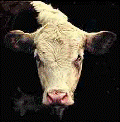Animal Science, Department of

Department of Animal Science: Dissertations, Theses, and Student Research
Date of this Version
12-2015
Document Type
Thesis
Citation
Trenhaile, M.D. 2015. Genomic analysis of sow reproductive traits: Identification of selective sweeps, major genes, and genotype by diet interactions. MS thesis. University of Nebraska-Lincoln, Animal Science Department.
Abstract
Reproductive traits, such as litter size and reproductive longevity, are economically important. However, selection for these traits is difficult due to low heritability, polygenic nature, sex-limited expression, and expression late in life. Marker-assisted selection may provide an alternative to increase genetic progress.
Nebraska Index Line (NIL) has been selected for litter size related traits since 1981. It is one of the main contributing lines to the UNL reproductive longevity resource population (n > 1,500), which was genotyped for 60,000 SNPs, phenotyped for age at puberty (AP), lifetime number of parities (LTNP), litter size traits, and other reproductive traits, and fed either a standard or energy-restricted diet during development. These populations are genetic resources to identify polymorphisms associated with reproductive traits as well as polymorphisms that interact with diet to influence reproductive traits that could be used in marker-assisted selection.
Selective sweeps for litter size were detected in NIL using high density genotypes, relative extended haplotype homozygosity, and allelic frequency differences between NIL and its control population, assessed by contingency tests and FST. Genome-wide association studies (GWAS) for litter size traits identified QTL located next to selective sweep regions identified via multiple methods. These regions harbor potential candidate genes with roles in reproductive processes.
A region on SSC5 that was associated with LTNP and AP was also uncovered by GWAS. The main candidate gene in this region, AVPR1A, is associated with social and sexual behavior. Sequencing revealed three non-synonymous SNPs, which were genotyped in 300 individuals with early and late AP. Association analysis indicated linkage between two SNPs and association with LTNP and AP.
Generalized linear mixed models were used to assess the effect of developmental energy restriction and interaction between AVPR1A genotype and diet on AP and probability to generate parities 1-3. Energy-restriction delayed AP by 7 d and significantly increased probability of generating parities 2 and 3. Diet and AVPR1A genotype interacted to significantly influence parity 3. In addition, GWAS for genotype by diet interaction effects identified eight and four markers that had diet-dependent effects on AP and LTNP, respectively. Single-marker association confirmed the interaction effects between these markers and energy intake prior to breeding.
Advisor: Daniel Ciobanu


Comments
A THESIS Presented to the Faculty of The Graduate College at the University of Nebraska In Partial Fulfillment of Requirements For the Degree of Master of Science, Major: Animal Science, Under the Supervision of Professor Daniel Ciobanu. Lincoln, Nebraska: December, 2015
Copyright (c) 2015 Melanie Dawn Trenhaile